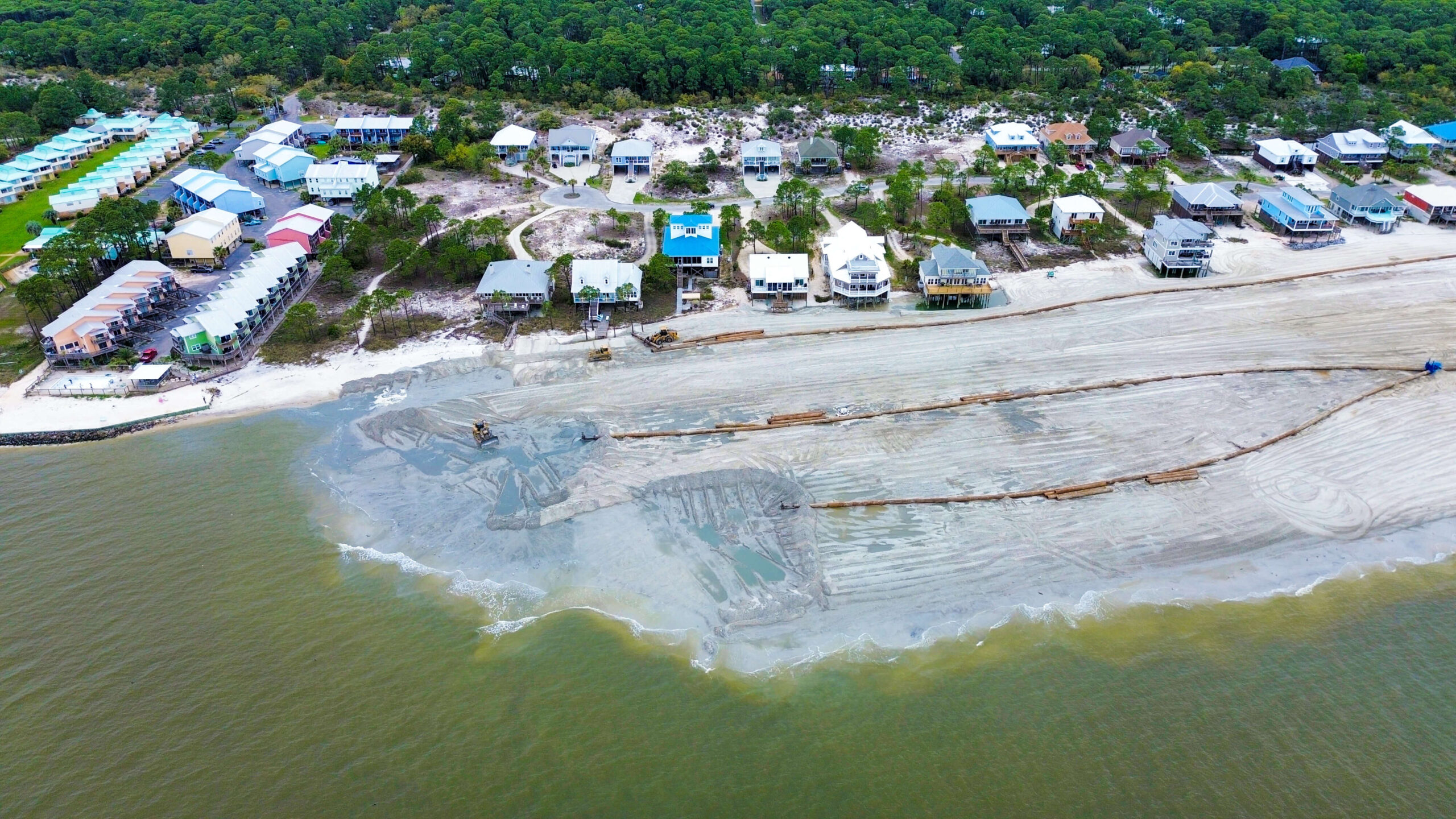
Dauphin Island’s East End Beach and Dune Restoration
This summer, the beach at Dauphin Island’s East End is set to become a more spacious and vibrant destination. With warmer weather on the way, how does it sound for the beach to be extended so more families can enjoy it and more animals can inhabit it? With the completion of the East End Beach and Dune Restoration project around the corner, visitors can look forward to enjoying an extended shoreline while providing a haven for various animal species.
Why restore the beach?
As a cherished part of Alabama’s coastline, the 14-mile-long barrier island south of Mobile is home to beautiful beaches and a wide variety of species that inhabit the sky, sea and sand. However, erosion, hurricanes and the passage of time have threatened these environments. The current restoration project began with Phase I in 2016, significantly mitigating erosion and habitat damage.
Now Phase II aims to continue this success, marked as a top priority in the US Army Corp of Engineers’ Final Alabama Barrier Island Restoration Assessment Report. With $22 million in funding from the National Fish and Wildlife Foundation Gulf Environment Benefit Fund and the National Coastal Resilience Fund, this phase will replenish about 1.5 miles of shoreline and restore 88 acres of beach and dune habitats, crucial for seabirds, shorebirds, migratory birds and sea turtles.
Besides protecting the Audubon Bird Sanctuary from erosion, the project will safeguard an additional 50 acres, including a maritime forest and freshwater lake, vital for migratory and nesting birds. Dauphin Island is also a critical habitat for marine life in the surrounding waters.
What does it look like to restore a beach?

To restore the beach and shoreline, millions of yards of sand had to be moved to successfully complete the project. The Town of Dauphin Island secured contractor Weeks Marine, Inc. and the project began. Construction efforts entail the hydraulic placement of more than one million cubic yards of sand to the island’s east end designed by South Coast Engineers (SCE) with Goodwyn Mills Cawood (GMC) overseeing construction, engineering, surveying, environmental and inspections.
The project kicked off with the installation of a pipeline extending from the staging area to a borrow site 4.5 miles southwest of the Sand Island Lighthouse in the Gulf of Mexico. Following pipeline placement, Weeks Marine deployed E.W. Ellefsen the large dredge, which has a tool that is used to draw sand from the ocean floor. The powerful 30″ Cutter Suction dredge was also supported by a suite of marine equipment including the 320 Booster and various tugs and barges. This feat of the process began in mid-February and by the end of March, the team had successfully distributed over one million cubic yards of sand, adhering to the meticulously designed template.




This process not only reformed the shoreline but also facilitated the creation of thousands of new Hummocky dunes as the sand was brought to the shore. There are also still plans to install more than 2.5 miles of sand fence to stabilize these formations.
In the coming weeks, the project will focus on completing the dune structures and installing the remaining sand fencing structures. This part of the project will take about two months, promising the creation of robust beach and dune ecosystems.
The culmination of the project will include the planting of over 600,000 plants across the new habitat, bolstering biodiversity and ecosystem stability.
This unique project and remarkable endeavor, set to be completed this summer, ensures Dauphin Island’s East End Beach is a flourishing refuge for wildlife and a peaceful escape for visitors.
